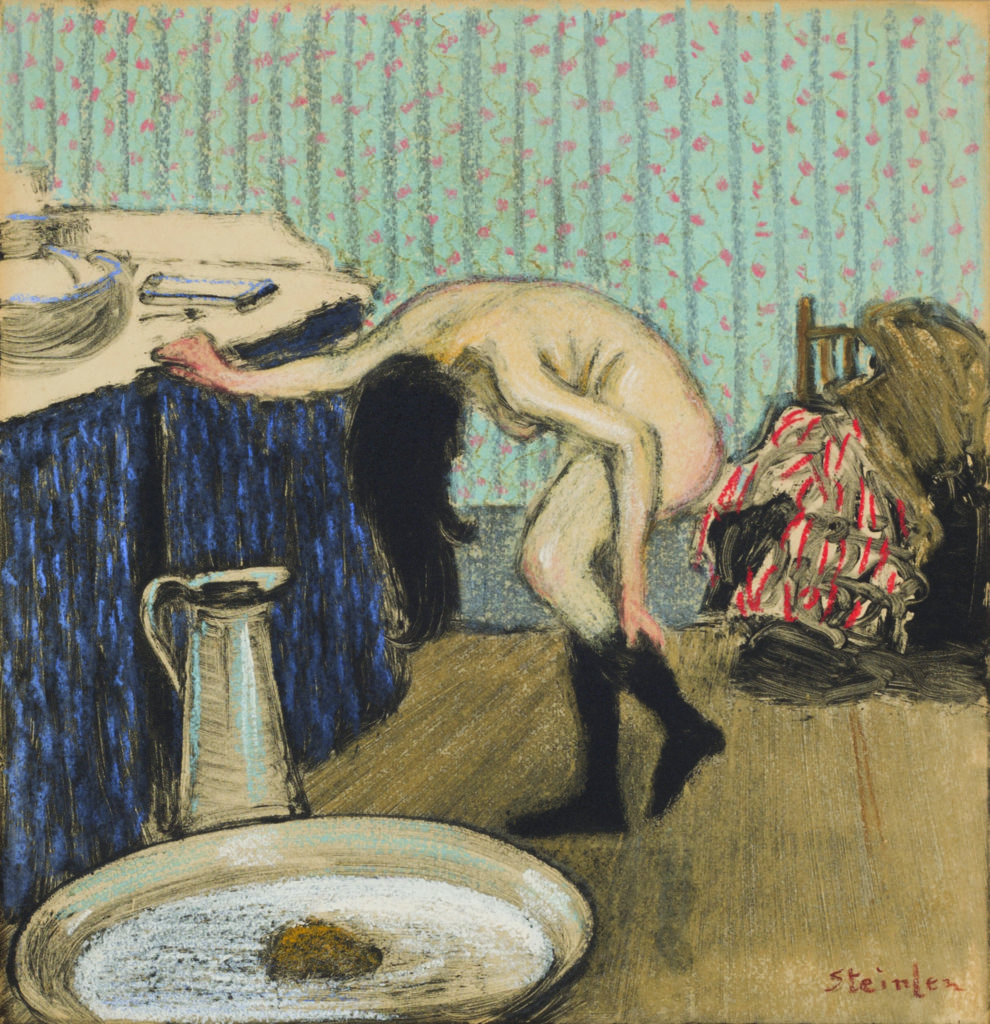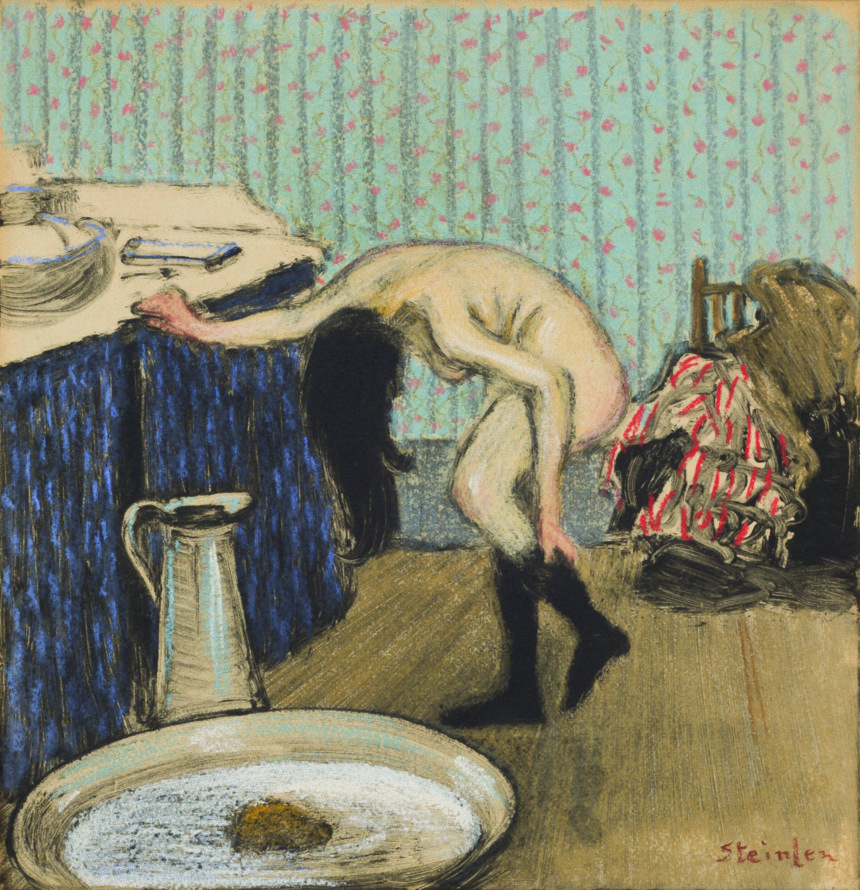The Antoine Laurentin gallery will attend the Salon du Dessin , from March 27 to April 1, Palais Brongniart, Place de la Bourse, Paris.
Théophile Alexandre Steinlen was born in Lausanne on November 10, 1859 in artistic family. In fact, his grandfather taught drawing in Vevey and his nine uncles were draughtsmen.
After two years of theological studies, it is quite natural that he turns to drawing that he has practiced since his childhood. In 1879 he left Switzerland to begin an apprenticeship as an industrial designer in a Mulhouse fabrics factory at one of his uncles. He met his future wife Emilie there. In 1881, the couple moved to Paris, in Montmartre district.
Théophile Alexandre Steinlen meets the artist Willette, Pierrot and Colombine’s creator who introduces him to Rodolphe Salis, also native of Lausanne and owner of Cabaret Le Chat Noir. He meets Jean-Louis forain, Aristide Bruant, Toulouse-Lautrec, Félix Vallotton, Alphonse Allais, Paul Verlaine. From the very beginning, Steinlen collaborated with the newspaper «Le Chat» a series of satirical drawings that have met with great success. As early as 1885, he also contributed to La Revue illustrée, La Gazette des Chasseurs, La Caricature then to Gil Blas illustré, au Rire and to l’Assiette au beurre; He was one of the artists who worked the most for Parisian cabarets. At the same time, he contributed to colour etching revival and was also very well-known as a poster artist, thanks to his first solo exhibition held in 1893 at the Galerie La Bodinière. From 1893, Steinlen exhibits paintings at the Salon des Indépendants, trying to practically every single genre: Nude, Landscapes, Flowers, Portraits and of course Cats. In 1901, he was naturalized French.
In 1903, the artist’s first major retrospective was organized by publisher Edouard Pelletan. He also exhibited in London in 1914, before general mobilization. He then went on illustrating war “at the rear,” accurately describing the daily life of civilians. It was only after the war in 1917 that a very important exhibition on these “Works of War” was organized. Théophile Alexandre Steinlen died in 1923 in Paris in his Montmarte eternal neighborhoods. Made famous by its Black Cat poster, it will make this iconographic theme his emblem, symbolizing freedom and dreamlike world.
Cats will therefore become his favourite subjects, representing them as asleep, irritated, playful….But above all, Steinlen was the artist who depicted the popular mores of Parisian life in the 1900s, getting closer to Zola’s naturalist approach. he rigorously observed, before crunching on a notebook, which allows him to create elaborated works. They accurately recount the Parisian Belle-Epoque, the centre of world cultural life. Historians sometimes use them as true testimonies of a bygone era.
He used many techniques such as Chinese ink, watercolour, oil, pencil, pastel and gouache.
This artwork by Steinlen depicts a young girl removing her stockings to make her toiletry in the the old-style bathtub located in the foreground. Steinlen likes painting and portraying the world of the little people in Paris and especially in Montmartre where he has lived since he left his native Switzerland. He paints prostitutes, laundresses, workers, but above all, woman.
In this composition, we find repeated curves between the bathtub, the pitcher, the bowl up to the arched back of the young woman while the lines of the floor take the eye up to the vertical lines of the wallpaper.




Leave a Reply